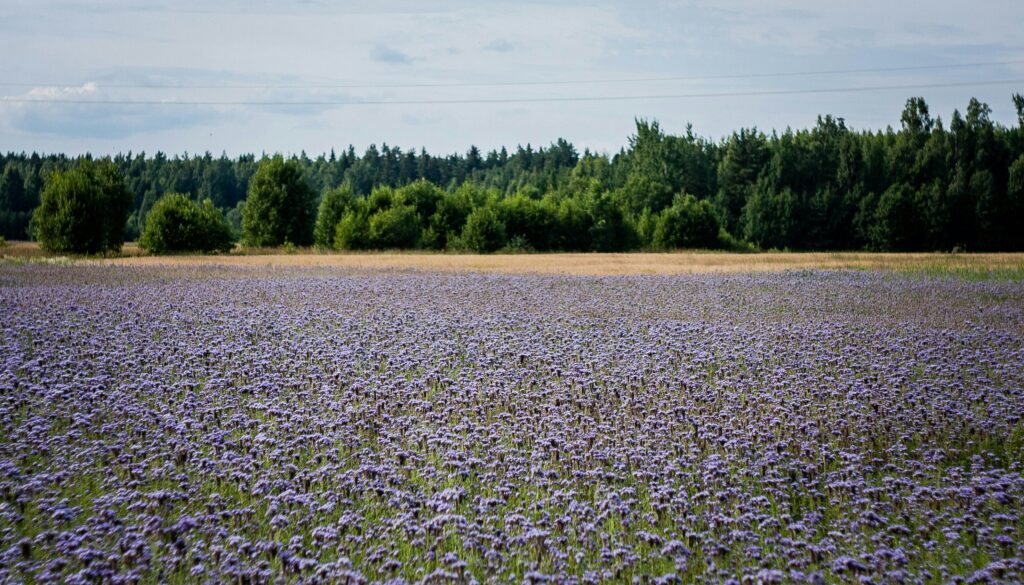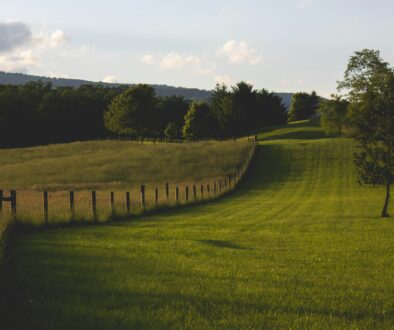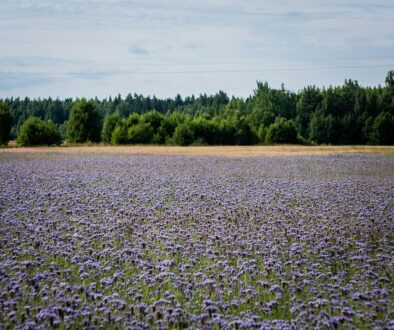Biodiversity Net Gain in England ; An Introduction (Part 2)
This article follows on from our earlier article which provided an introduction to the principles of Biodiversity Net Gain. Here we look at some other BNG – relevant issues.
Irreplaceable habitats
Irreplaceable habitats are ecologically valuable habitats which are (in short) difficult or time consuming to restore, recreate or replace once destroyed due to their age, uniqueness, species diversity or rarity.
The Environment Act 2021 gives the Secretary of State power to make Regulations to modify or exclude the application of the relevant Schedule (Schedule 7A Part 2) to the Town and Country Planning Act 1990 in relation to any development for which planning permission is granted where the onsite habitat is an ‘irreplaceable habitat’.
Where irreplaceable habitats are affected by development, the 1990 Act permits those Regulations to require measures to be taken to minimise the adverse impacts of the development on those habitats.
The Biodiversity Gain Requirements (Irreplaceable Habitat) Regulations 2024 define ‘irreplaceable habitat’ for these purposes and modify its application in respect of habitat falling within the definition.
Examples of irreplaceable habitats include blanket bog, lowland fens, limestone pavements and coastal sand dunes.
The effect of the modifications is that the requirement otherwise applicable to developments for which planning permission is granted, to increase the biodiversity value of the development by a specified percentage, is disapplied. Instead, developers must make alternative arrangements to minimise the adverse effect of the development on the biodiversity of the onsite habitat where that habitat is deemed irreplaceable. The modifications do not apply in respect of a phased development.
Government guidance on irreplaceable habitats sets out what developers need to do in relation to irreplaceable habitats, including:
- considering irreplaceable habitats at the design and planning application stage
- calculating BNG when there are irreplaceable habitats, and
- recording irreplaceable habitats in the Biodiversity Gain Plan
It clarifies that developers should record all on-site irreplaceable habitat in the metric calculation tool, but that the otherwise applicable 10% BNG requirement does not apply when irreplaceable habitats are lost. This is because they are so difficult to recreate and have such a high biodiversity value that it would be impossible to achieve the requirement to increase biodiversity in addition to avoiding net loss.
However, it is also important to remember that BNG does not change the existing protections and compensation requirements for irreplaceable habitat in existing planning policy, such as the National Planning Policy Framework.
Small sites:
The Department for Environment, Food & Rural Affairs (DEFRA) has published ‘The Small Sites Metric (Statutory Biodiversity Metric) User Guide’, a simplified version of the statutory biodiversity metric specifically designed for use on small development sites.
Small sites, to which this metric applies, are defined as:
- for residential development: where the number of dwellings to be provided is fewer than 10 units on land less than 1 hectare, or where the number of dwellings to be provided is not known, a site area of less than 0.5 hectares, and
- for non-residential development: where the floor space to be created is less than 1,000 square metres, or where the site area is less than one hectare.
However, the small sites metric cannot be used on sites where:
- habitats not available in the metric are present
- “priority habitats” (including some hedgerows and arable field margins) are present within the development site
- European protected species are present on the development site, or
- any offsite interventions are required.
Calculating the 10% Net Gain
Biodiversity metric: The 1990 Act confirms that the biodiversity value of any habitat is to be calculated in accordance with the biodiversity metric produced and published by the Secretary of State. DEFRA has published Statutory biodiversity metric tools and guides for measuring the biodiversity value of habitat for BNG. The Act’s provisions allow for the metric to be updated to allow for technical improvements.
Measuring the pre-development biodiversity value: The 1990 Act specifies that the pre-development biodiversity value of the onsite habitat is the biodiversity value of the onsite habitat on the ‘relevant date’. The relevant date is:
- in a case in which planning permission is granted on an application, the date of the application, and
- in other cases, the date on which the planning permission is granted
However, a developer and planning authority can agree another date where appropriate.
In calculating the pre-development biodiversity value, there are three habitat quality components of the metric:
- distinctiveness—a measure based on the type of habitat and it’s distinguishing features. This includes consideration of species richness, rarity, the extent to which the habitat is protected by designations and the degree to which a habitat supports species rarely found in other habitats.
- condition—a measure of the habitat against its ecological optimum state. Condition is a way of measuring variation in the quality of patches of the same habitat type.
- strategic significance—this describes the local significance of the habitat based on its location and the habitat type.
Where a person carries on activities on land on or after 30 January 2020, without planning permission, which cause the biodiversity value of the onsite habitat to be lowered, the pre-development biodiversity value of onsite habitats is to be taken as the value before those activities took place. This aims to prevent manipulation of the system by, for example, clearing habitats in advance of ecological assessments.
Where planning permission is granted in respect of land which is registered in the Biodiversity Gain Sites register, the pre-development biodiversity value of the land is the total of the biodiversity value of the onsite habitat on the relevant date, and the biodiversity value of the habitat enhancement which is, on that date, recorded in the register as habitat enhancement to be achieved on the land.
The government has published guidance for developers on what habitat creation or enhancements can count towards the BNG 10% target. It states that the creation or enhancement of habitats can contribute towards BNG under additionality if the development is to:
- comply with a statutory obligation or policy, for example green infrastructure, environmental impact assessment compensation or sustainable drainage
- provide river basin management plan mitigation and enhancement measures
- provide mitigation or compensation for protected species or sites, for example nutrient mitigation.
Habitat creation or enhancements will not count towards BNG if they are already required for restocking conditions relating to a tree felling licence or a restocking notice, or marine licensing remediation under applicable Environmental Damage Regulations.
Measuring the post-development biodiversity value : The 1990 Act defines the post-development biodiversity value as the projected value of the onsite habitat as at the time the development is completed. That value is calculated by taking the pre-development biodiversity value and:
- adding the amount of that increase, if at the time the development is completed the development will, when taken as a whole, have increased the biodiversity value of the onsite habitat, or
- subtracting the amount of that decrease, if at the time the development is completed the development will, when taken as a whole, have decreased the biodiversity value of the onsite habitat.
The metric applies three risk multipliers to post-development enhancement and creation interventions:
- difficulty of creation or enhancement— i.e. the uncertainty in the effectiveness of techniques to create or enhance habitats
- temporal risk— i.e. the average time lag, measured in years, between the start of habitat creation or enhancement works and the target outcome
- spatial risk—i.e. where a project cannot achieve a net gain in biodiversity units onsite, offsite units can be used. The spatial risk multiplier reflects the relationship between the location of onsite biodiversity loss and the location of offsite habitat compensation. It affects the number of biodiversity units provided to a project by penalising proposals where offsite habitat is located at distance from the impact site (see Offsite biodiversity gain section below).
Where the person submitting the Biodiversity Gain Plan for approval proposes to carry out works that increase the biodiversity value of the onsite habitat, and the planning authority considers that the increase is significant, it can only be considered part of the post-development biodiversity value if the gain will be maintained for at least 30 years after completion of the development, and secured through one of three mechanisms:
– a planning condition, or
– a planning obligation, or
– a “conservation covenant” (which is outside the scope of this article).
Improving onsite calculations:
When looking at how to improve a site’s onsite calculations for the purpose of calculating BNG, it makes sense to consider at the outset whether permitted development rights can be utilised to authorise part of the development, to reduce the site area for which planning permission needs to be obtained.
This is because permitted development is not subject to the net gain requirements. If that is not possible, developers may want to look for sites with low value pre-development onsite habitats, such as sites comprising a large amount of built form and urban habitats; the more natural the habitat, the more expensive it will be to provide the BNG. It may also be worth considering whether the red line boundary of the application site could be altered to exclude high-value habitats. If there are high-value habitats onsite, developers should consider whether they can avoid developing such habitats and potentially look to enhance or restore them.
When thinking about landscaping the site, developers should think about using techniques that will provide biodiversity units, such as wildflower meadow seed mixes and native scrub and trees. They should bear in mind that species protection will not count in the calculation, as the 1990 Act specifies that the biodiversity value is calculated on ‘the habitat on the land to which the planning permission relates’, therefore (for example) bird and bat boxes will not count. Green roofs and walls may help to add value but are often costly.
Offsite Biodiversity Gain:
The 1990 Act provides for offsite biodiversity gains to be registered and for biodiversity credits to become available, and for these to be taken into account in deciding whether a development meets the 10% net gain objective. These credits might be considered where the 10% net gain cannot be achieved on a development site alone. However, and as above, the biodiversity metric applies a spatial risk multiplier, requiring more offsite biodiversity units or credits to be made available than would be the case if onsite enhancement could be provided. The metric effectively penalises proposals where offsite habitat is located at distance from the impact site, reflecting the relationship between the location of onsite biodiversity loss and the location of offsite habitat compensation.
It would therefore be better for a developer to buy units locally to get the best calculation of biodiversity units; the further away the offsite habitat, the more units will need to be purchased.
Registered Offsite Biodiversity Gain:
Registered offsite biodiversity gain is in essence Biodiversity Gain achieved by means of an arrangement on land other than the development site, so that it can be counted towards the development meeting the biodiversity gain objective.
The 1990 Act defines a ‘Registered offsite biodiversity gain’ as any habitat enhancements, where the enhancement is required to be carried out under a conservation covenant or planning obligation, and is recorded in the Biodiversity Gains Sites register. The biodiversity value of Registered offsite biodiversity gain is to be measured, under the biodiversity metric, in relation to development to which it is allocated in the planning obligation or conservation covenant.
Biodiversity Gain Sites Register:
The 2021 Act provides for a public Biodiversity Gain Sites Register. This Register lists ‘Biodiversity Gain Sites’, i.e. pieces of land where:
- a person is required to carry out works to enhance the biodiversity of the habitat under a conservation covenant or planning obligation
- that person (or another person) is required to maintain the enhancement for at least 30 years after the completion of those works, and
- the enhancement is made available to be allocated in accordance with the terms of the covenant or obligation to one or more developments for which planning permission is granted.
The Biodiversity Gain Site Register Regulations 2024 also make provision for the Biodiversity Gain Sites Register. Natural England, as the ‘Register Operator’, must establish and maintain the Register and ensure that the information in it is accessible to the public.
Among other matters, the Regulations set out:
- the conditions for land to be eligible to be registered
- who can make an application to register land in the Register (essentially, this is the person who is required to carry out works on the land for the purpose of habitat enhancement, or to maintain any habitat enhancement, or a person by whom either requirement is enforceable)
- the required content of an application to register land in the Register
- the procedure for the determination of applications and the registration of land by the Register Operator
- how entries on the Register can be amended or removed
- the circumstances in which appeals can be made to the First-Tier Tribunal against the rejection of applications, and other decisions of the Register Operator
DEFRA has published guidance on how to register a Biodiversity Gain site and to record allocation of off-site biodiversity gains to a development.
Information about Biodiversity Gain sites and off-site gains allocated to developments can be searched via DEFRA’s “Search the Biodiversity Gain Sites Register” website.
Fees:
The Biodiversity Gain Site Register (Financial Penalties and Fees) Regulations 2024 contain a Schedule setting out the fees for applications to the Biodiversity Gain Site Register. At present, an application to register biodiversity units costs £639. The fee to register the allocation of biodiversity units to developers is £45. Those fees also apply for amendments, either to the information provided when units were registered, or to amendments about their allocation to developers. Removing biodiversity units from the register costs £89.
Penalties:
The Biodiversity Gain Site Register (Financial Penalties and Fees) Regulations 2024 give power to the Register Operator to impose a £5,000 financial penalty on an applicant, where the Register Operator is satisfied, on the balance of probabilities, that false or misleading information has been supplied in connection with an application to register land in the Register.
(This article is not intended to be comprehensive or to provide specific legal advice. It should not be relied upon in the absence of specific advice given in relation to particular circumstances.)
For further information, please contact: Natalie Linehan, Andrew Williamson or David Thorp




